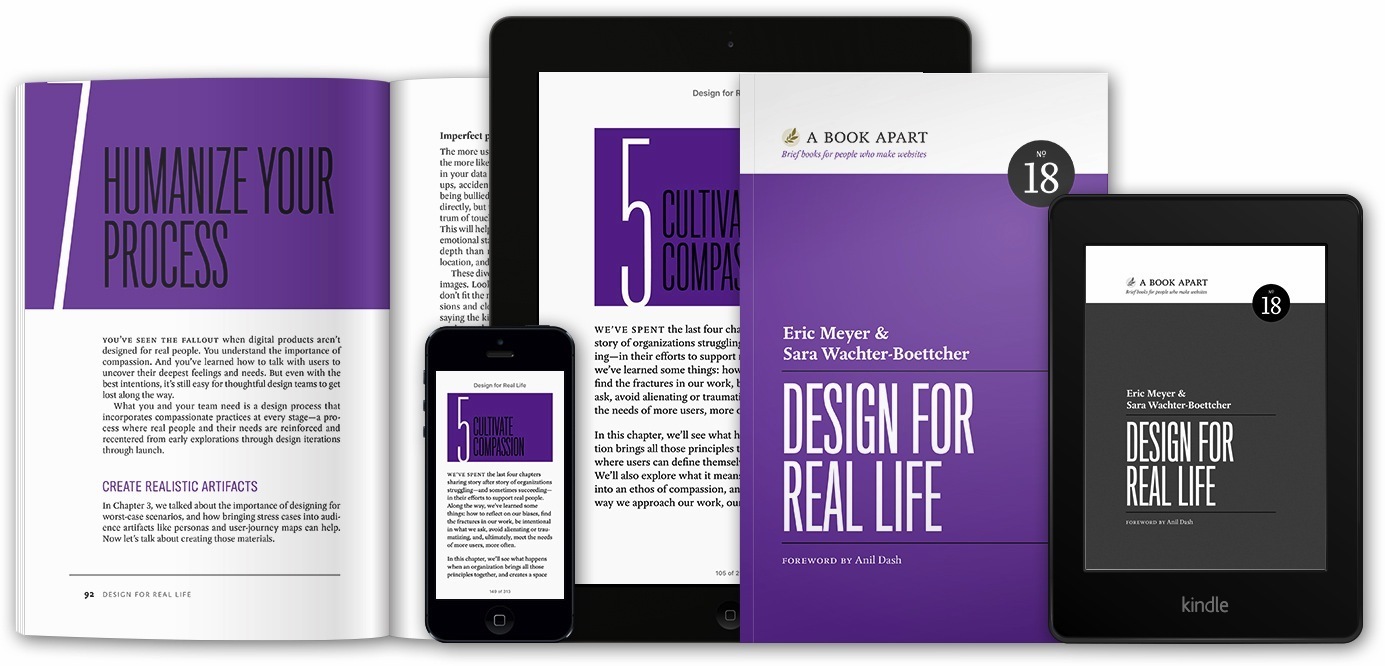Design for Real Life
No one who attended An Event Apart in 2015 can forget the story. AEA co-founder Eric Meyer and his family were vacationing at a beach resort in New Jersey when their youngest daughter, Rebecca, fell frighteningly ill. There was no room for her parents in the helicopter that immediately airlifted Rebecca to the Children's Hospital of Philadelphia, so Eric and his wife Kat followed her as passengers in a good Samaritan's car.

None of the people in the car knew where the hospital was located or what they were supposed to do when they got there. And while panic and grief had not yet set in, the shock of the fast-moving events prevented everyone from thinking clearly.
As the vehicle sped toward Pennsylvania, it finally occurred to the passengers that the hospital must have a website, and that every smartphone in the car was also a powerful computer connected to the internet.
Eric quickly located the hospital's website—and although the site was in English, although it was professionally designed, although it had been vetted by information architects and user experience professionals who were used to thinking in terms of identifying and meeting user needs, although it had likely been “user tested” against a standard set of user profiles, despite all the care and hours that had obviously gone into the site, it was meaningless and unusable to Eric and his family, given the emotional and mental state in which they found themselves.
UX pioneer Steve Krug famously advised designers not to make the user think; but what about folks who can't think, because they're experiencing a crisis the site's designers never imagined or accounted for? This question, and others arising from it, nagged at Eric after the initial crisis with Rebecca was behind him. So began a search to identify and develop best practices for an audience that isn't being served by our designs, and needs our help most.
Meanwhile, AEA speaker (and A List Apart editor-in-chief emeritus) Sara Wachter-Boettcher was working through similar issues in her content strategy practice (where she helps clients like The Associated Press, Home Depot, and Harvard learn from users, define messaging, prioritize efforts, and adapt for mobile)—and in her own life, when she found herself dealing with forms that asked deeply personal questions without giving any hint as to why, or what would happen to that information once it was given. Sara and Eric teamed up to look further into these types of design failures, and how they could be anticipated and avoided.
The result, after more than a year of research (not to mention all those unforgettable presentations at AEA) is Design for Real Life (A Book Apart, 2016), the first design book to address the needs of the forgotten user in crisis—and users in other states not generally accounted for in most of our practices. From the book page:
Join Sara Wachter-Boettcher and Eric Meyer as they turn examples from more than a dozen sites and services into a set of principles you can apply right now. Whether you're a designer, developer, content strategist, or anyone who creates user experiences, you'll gain the practical knowledge to test where your designs might fail (before you ship!), vet new features or interactions against more realistic scenarios, and build a business case for making decisions through a lens of kindness. You can't know every user, but you can develop inclusive practices that support a wider range of people. This book will show you how.
We're delighted to bring you Eric and Sara's insights via our sister publishing company, A Book Apart, and excited to see how your work will change as you identify stress cases, challenge your assumptions, design with compassion, and create experiences that support more of your users, more of the time.
You can order Design for Real Life from abookapart.com. If you missed Eric's presentation last year, you can watch the video on our website (along with 30 hours of similarly compelling material from the likes of Kristina Halvorson, Jeremy Keith, Val Head, Derek Featherstone, and other industry thought leaders). And for more of Eric's thinking on the subject of real-life design, don't miss seeing him at An Event Apart Nashville, Seattle, and Boston—or any of the other cities where AEA will take place this year.